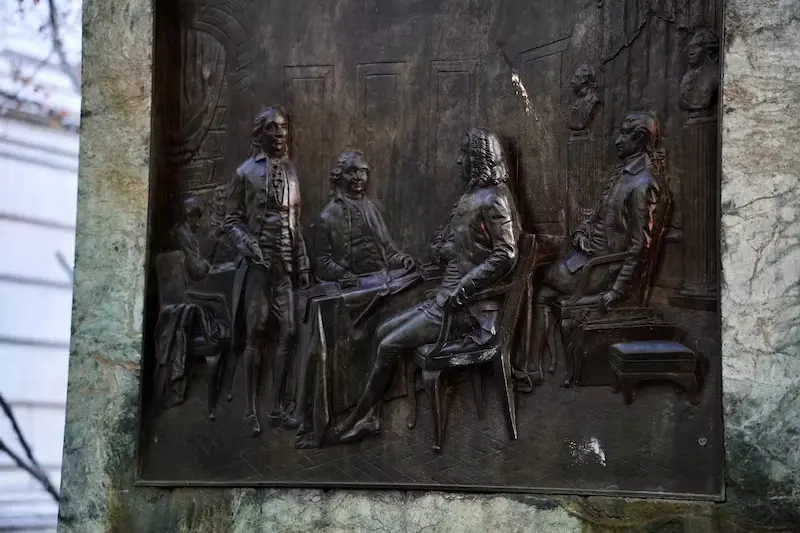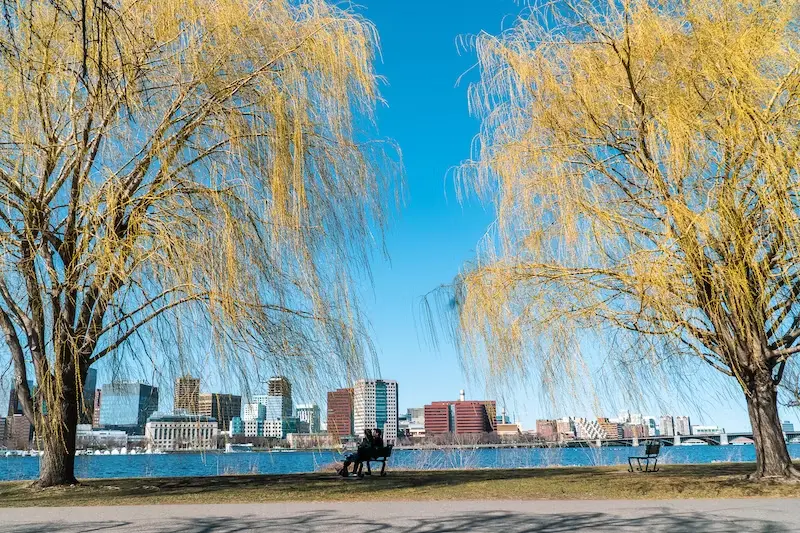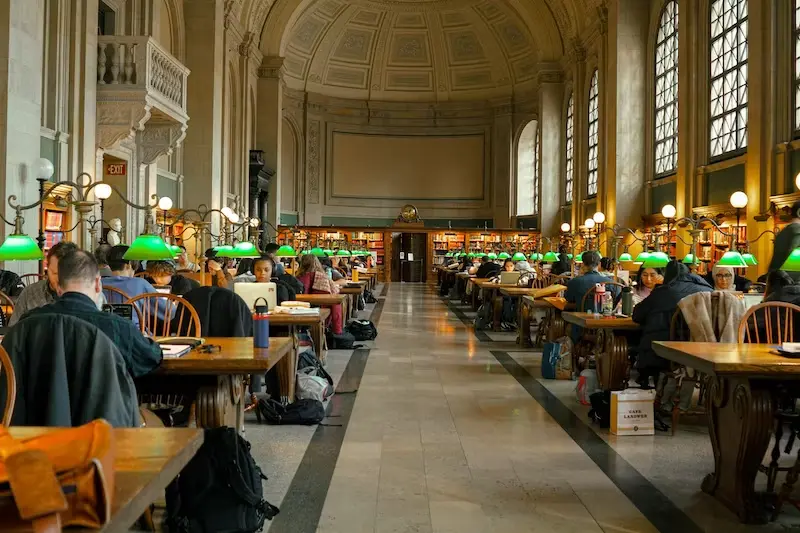Freedom Trail Adventures: Boston's History Within 16 Spots

Embarking on Freedom Trail adventures is like stepping into a time machine, where every turn on the cobblestone streets is a page out of a history book. It’s a journey through Boston's history, tracing its pivotal role in the American Revolution and beyond. From the stirring tales of the Boston Massacre to the defiant Boston Tea Party, where the British Parliament passed the Tea Act, and the actions that shaped the nation, these 16 stops offer a riveting encounter with US history.
Along the way, you'll also discover the significance of Boston Harbor, delve into the history of Native Americans, explore the Massachusetts Bay Colony, and learn about pivotal moments
And don't let your historical exploration be weighed down by your luggage. For a hassle-free journey, take advantage of luggage storage Boston Logan, and ensure your Freedom Trail adventure is as light and unencumbered as the spirit of liberty itself. Download the Nannybag mobile app for easy left luggage Boston today!
1. Boston Common: Where Liberty Begins
Boston Common is a historic landmark that holds a special place in American history. It was established in 1634 and is not only America's oldest public park but also an emblematic site of the country's struggle for freedom. In the early days, it served as a training ground for British troops stationed in Boston. However, as the tension between the American colonists and the British Crown grew, Boston Common witnessed a transformation.
2. Massachusetts State House: Beacon Hill’s Crown
The golden dome, often called the "New State House," was added to the building in 1798. It is covered in 23-karat gold leaf, and its gleaming presence is a testament to Boston's prosperity and aspirations for a bright future. The State House also houses the Massachusetts General Court, making it the hub of state government activities. Visitors can explore its grand interior, including the historic Hall of Flags and the Senate Chamber, to better understand the state's governance and its role in shaping the nation.
3. Boston Massacre Site: Echoes of Rebellion
The site of the Boston Massacre is a solemn place that bears witness to a critical moment in American history. On the evening of March 5, 1770, tensions between the American colonists and British soldiers escalated into a violent confrontation in front of the Old State House. British troops, under pressure from an angry mob, opened fire, killing several colonists and injuring many others.
4. Old State House: A Revolutionary Stage
The Old State House is another iconic landmark along the Freedom Trail, and it played a pivotal role in America's quest for independence. On July 18, 1776, a momentous event took place that would forever change the course of American history. At this historic building, the Declaration of Independence was first read to the citizens of Boston.
Imagine standing in the very spot where this groundbreaking document was publicly announced. The atmosphere must have been electric, with emotions ranging from fear to the unbridled joy of potential freedom coursing through the crowd.
Reading the Declaration of Independence at the Old State House marked the official declaration of the American colonies' separation from British rule. It was a moment of great significance, and visiting this site allows you to connect with the revolutionary spirit of the time and appreciate the courage and determination of those who sought liberty.
5. The North Church: One If by Land
The Old North Church, officially known as Christ Church in the City of Boston, is an iconic place that played a crucial role in American history, particularly during Paul Revere's midnight ride. This historic church is famous for being where the signal lanterns were displayed on the night of April 18, 1775, as part of Paul Revere's ride to warn of British troop movements.
6. Paul Revere's House: Home of a Patriot
Paul Revere's House offers visitors a unique glimpse into the life of a genuine American hero and one of the most iconic figures of the American Revolution. Step inside the modest home where Paul Revere resided and where he planned and executed his famous midnight ride.

7. Boston Tea Party Ships and Museum: A Splash of Defiance
The Boston Tea Party Ships and Museum offers a captivating opportunity to step back in time and relive one of American history's most audacious acts of defiance. This immersive experience takes visitors on a journey to the night of December 16, 1773, when colonists protested the British Parliament's imposed Tea Act by dumping British tea into Boston Harbor.
8. Bunker Hill Monument: A Pinnacle of Bravery
The Bunker Hill Monument is a tribute to the American colonists' bravery and determination during the Revolutionary War's early days. Climbing the 294 steps to the top of this towering obelisk offers a physical challenge and an opportunity for reflection.
9. USS Constitution: Old Ironsides
The USS Constitution, also known as "Old Ironsides," is a relic of American naval history and a testament to the nation's maritime heritage. This legendary warship played a crucial role in securing American waters during the United States' early years.
10. Faneuil Hall: The Cradle of Liberty
In the 18th century, Faneuil Hall was a gathering place for patriots and a hub of revolutionary fervor. Today, it continues to serve as a vibrant marketplace filled with shops, restaurants, and street performers. Visitors can soak in the hall's rich history while also enjoying the lively atmosphere of a modern urban marketplace. It's a place where the past and present seamlessly blend, showcasing Boston's enduring spirit of freedom and commerce.
11. The Legacy of John F. Kennedy
Visitors to Boston can explore the John F. Kennedy Presidential Library and Museum, which is dedicated to preserving the memory and legacy of this charismatic and visionary leader. The museum offers insights into his life, accomplishments, and the challenges of his era, including the Cuban Missile Crisis and the Civil Rights Movement. Kennedy's legacy serves as a reminder of Boston's continued influence on national politics and its role in shaping American history.

12. The Charles River Esplanade: Nature Meets History
Consider strolling along the Charles River Esplanade for a refreshing detour off the Freedom Trail. This picturesque park offers a unique blend of natural beauty and historical significance. As you meander along the river's edge, you'll find yourself in a serene oasis where the beauty of Boston merges seamlessly with its storied past.
13. Boston Latin School: Education and Revolution
During the colonial period, the Boston Latin School was an institution for teaching reading, writing, and arithmetic and a hotbed of revolutionary ideas. Many of its alumni became prominent figures in the American Revolution, including John Hancock, Samuel Adams, and Benjamin Franklin. Visiting this historic site offers a glimpse into the early days of American education and the integral role it played in fostering a spirit of independence and intellectual curiosity.
14. The Boston Public Library: A Monument to Knowledge
Exploring the Boston Public Library allows you to immerse yourself in the city's literary and cultural heritage. The library's architecture, including the grand entrance hall and Bates Hall reading room, is a work of art. It's a place where the past is carefully curated and where visitors can gain a deeper appreciation of Boston's history, culture, and intellectual legacy.

15. Boston Red Sox: A New Era of Boston History
Attending a Red Sox game at Fenway Park is an experience like no other. The passionate fan base, the iconic "Green Monster" left-field wall, and the lively atmosphere create a sense of camaraderie and excitement. The team's history is intertwined with Boston's; generations of fans have shared its victories and defeats. A trip to Fenway Park is a celebration of the city's sports culture and a way to connect with the living history of Boston.
16. Your Journey, Your Freedom Trail Adventure
As you conclude your Freedom Trail adventures, it's essential to remember that Boston's history is not merely a chronicle of the past but a continuous story being written today. The spirit of liberty and the pursuit of freedom that defined the city's early days continue to shape its present and future.

Say hello to exploring and goodbye to heavy bags!
What if you could enjoy every minute in the city without the burden of your bags?
- Safe luggage storage for a flat daily price of $4.50/luggage item
- Included luggage protection of up to €10000 in case of breakage, loss or theft
